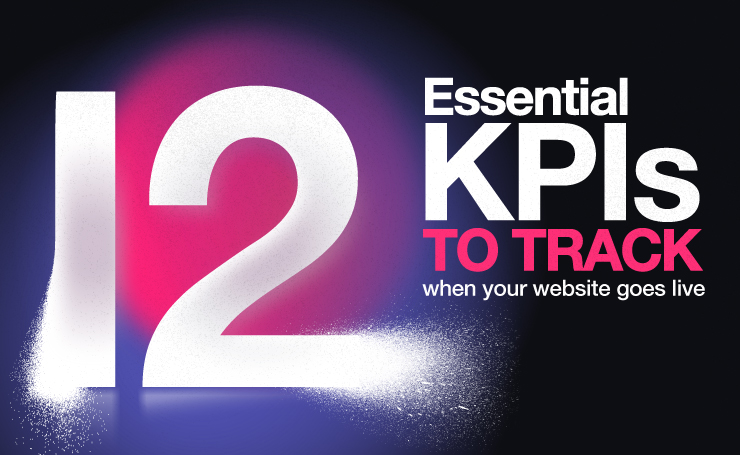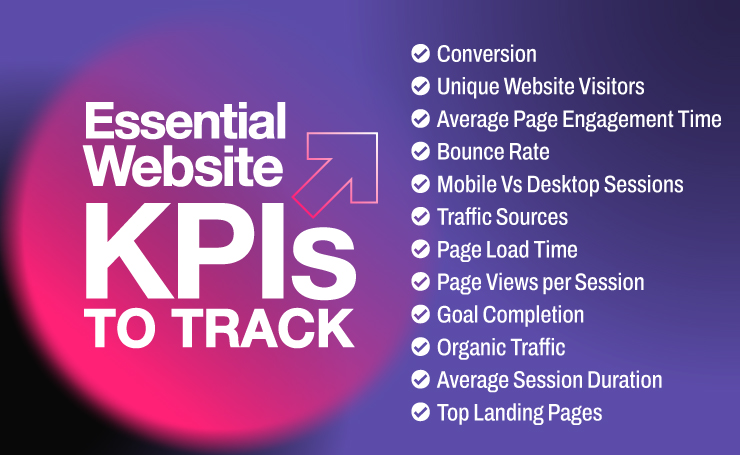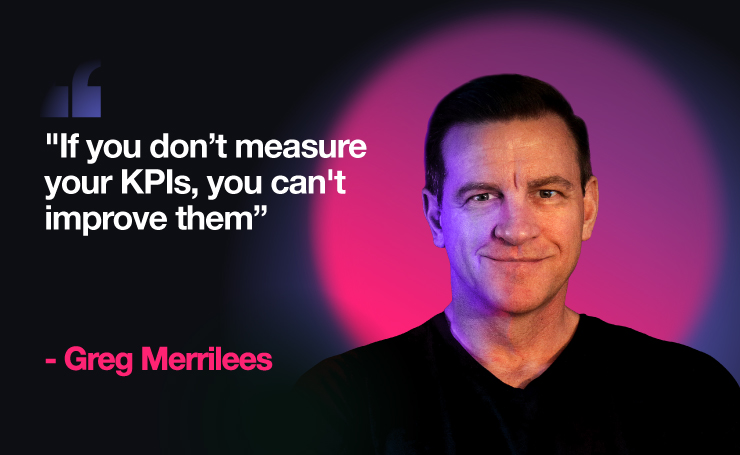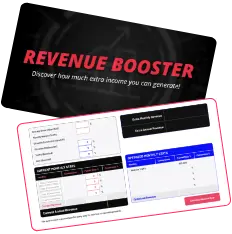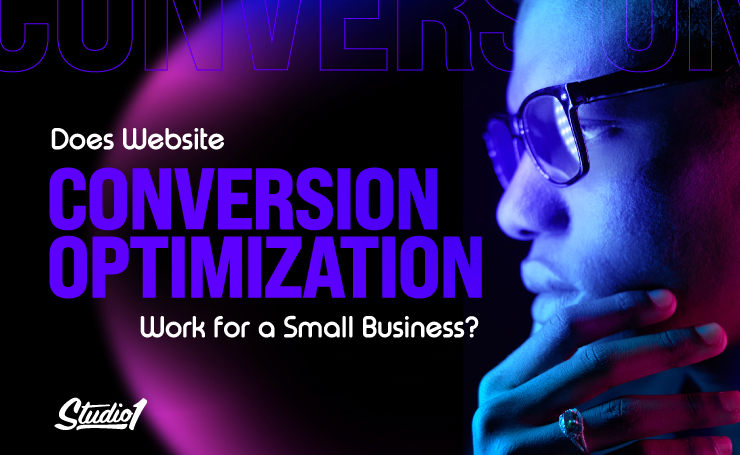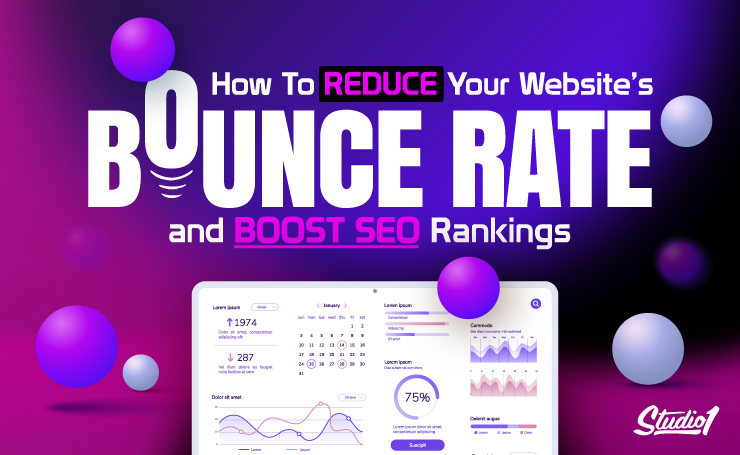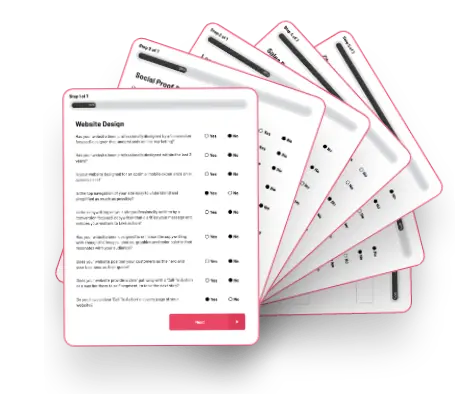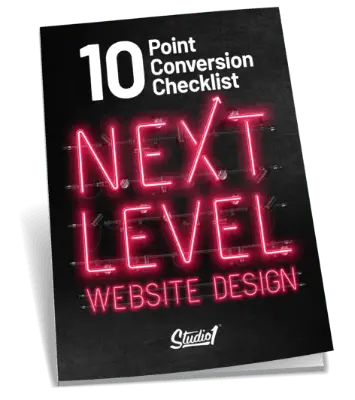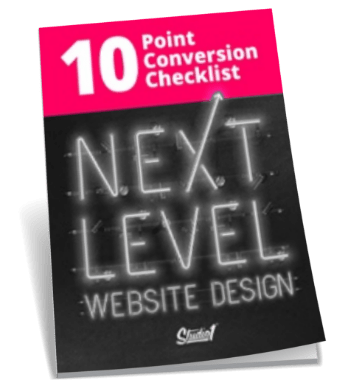When captains set out to sea, they don’t just rely on the wind to guide them. They track their course with a compass or GPS, to check their speed, and monitor the weather—all vital indicators to ensure they reach their destination.
Similarly, when you launch a new website, key performance indicators (KPIs) are your navigational tools. These metrics reveal if your website is on course toward success or drifting off track.
What Are Website KPIs?
Website KPIs are quantitative assessments of your website’s performance, ensuring it’s achieving your business goals like driving traffic, conversions, and user engagement just to name a few.
Why Are Website KPIs important?
Website KPIs are important because they provide clear, data-driven insights into how well your website is performing. Just like a dashboard in a car, KPIs show you whether everything is running smoothly or if you need to adjust certain things.
By tracking the right KPIs, you can identify what’s working and what isn’t, spot problems early, and make informed decisions to address these issues.
The Cost of Ignoring Website KPIs: How Much Time, Money, and Effort Are You Wasting?
Without the right KPIs in place, you’re operating blindly – unable to measure how far you are from reaching your business goals.
And since your website KPIs provide you with insights into your website performance, tracking them allows you to figure out what needs to be optimized on your website to maximize your results.
12 Essential Website KPIs to Track
1. Conversions
A conversion occurs when your visitor takes your desired action on your website – whether it’s subscribing to your email list, downloading your ebook, taking a quiz, or making a purchase.
Why tracking your conversions is important
- It shows how well your website is turning visitors into leads, subscribers, or customers.
- It allows you to optimize your website to drive more actions that directly impact your revenue and growth.
- It helps identify your most effective marketing channels that lead to the highest conversions.
How to calculate it
To get your conversion rate, divide the number of conversions by the total number of visitors, then multiply by 100 to get a percentage. For instance, if you have 1000 visitors, and 30 of them take your desired action, then your conversion rate is 3%.
What is considered a good conversion?
What qualifies as a good conversion rate depends on you’re industry and busienss model.
Here are some ‘average to good’ conversion rates:
E-commerce: 1-3%
B2B SaaS: 3-5%
Service Business Websites: 2-5%
Lead Generation landing Pages: 5-15%
How to improve your conversions
-
Write compelling copy
Compelling copy can significantly impact your conversions by clearly communicating your value, resonating with your target audience, and persuading them to act.
One of the copywriting frameworks that is proven and tested to drive results is the SPIN selling framework of Neil Rackham.
In your copy, you can apply the SPIN selling framework by focusing on four key elements within the SPIN Acronym:
Situation: Start by understanding and describing your visitor’s current situation to resonate with them.
Problem: Highlight the specific problems or pain points your product or service solves.
Implication: Explain the consequences of not solving these problems, and how that will affect them.
Need-Payoff: Finally, present how your solution uniquely solves their problem, showing the benefits they’ll gain by choosing your solution.
By following this framework, your website becomes more persuasive, leading to higher conversions.
-
Create an effective visual hierarchy
Visual hierarchy guides your users’ attention to key elements like headlines and calls-to-action, impacting how easily they find crucial information and take action.
To improve the user experience on your website, have a clear layout design, legible fonts, contrasting colors, and strategic placements of important elements. This way, you can create a smooth flow to enhance user experience and boost your conversions.
-
Enhance the page load speed
Users are less likely to stay on a slow-loading website, leading to higher bounce rates and missed opportunities. So optimize images, minimize code, and enable caching, and speed optimization techniques or plug-ins to boost page load speed.
-
Choose the most effective marketing channels for your business
- Traffic from organic search tends to convert better than other sources because users are actively searching for what they need, making them more likely to engage with relevant content.
-
- Sds in paid search campaigns are tailored to specific keywords and audience segments, and they often result in good conversions.
-
- Social media users are often browsing casually rather than actively searching to buy, traffic from these platforms so they typically have lower conversions.
-
- Email marketing campaigns are aimed at specific audience segments with messaging that resonates with them, so you can expect higher conversion rates.
-
- Display ads typically have lower conversions because users may not be actively searching for the advertised product or service.
-
- Affiliate marketing can achieve high conversion rates if the affiliate has built trust in their brand and a loyal audience.
When you measure the most effective traffic source to your website, you can then start to figure out how that traffic is performing on your website.
There are many factors in monitoring the performance of your website and tracking your website KPIs is crucial to identify exactly what’s holding it back.
By monitoring these metrics, you can pinpoint areas for improvement and take action to boost your conversions.
2. Unique Website Visitors
Unique website visitors refer to the number of individuals who visit your website within a specific time. Each visitor is counted only once, regardless of how many times they return or how many pages they view on your website.
Why tracking your unique website visitors is important
- It reveals how well your website is performing in terms of having relevant and engaging content.
- It helps you gauge your website’s popularity, allowing you to improve your SEO strategies.
- It allows you to understand your audience’s growth and engagement over time.
How to calculate it
Divide the total number of unique visitors by the total number of users during a specific period. Google Analytics is a great tool to see this information.
How to analyze it
Compare your current data with past periods to identify growth trends or declines. Assess the time spent on your website and the pages your visitors viewed to determine if they find your content engaging.
What is considered a good number of unique website visitors?
According to HubSpot, a good number of website visitors varies.
While there is a correlation between the number of your employees and monthly visitors, having more employees doesn’t guarantee higher visitor numbers.
How to increase the number of your unique website visitors
Several factors impact the number of your unique website visitors. Consider improving the following:
- The quality and relevance of your content
- Search engine optimization (SEO) practices
Additionally, seasonal trends and external events can also influence visitor numbers.
3. Average Page Engagement Time
Average page engagement time indicates the time your visitors spend on a specific page.
Why tracking it is important
- It reflects how useful and engaging your content is to your visitors.
- It tells whether or not your website meets your visitors’ expectations and provides the information they’re looking for.
- It can hint at potential issues with your page load speed.
How to calculate it
Calculate the average by dividing the total engagement time by the total number of sessions.
What is considered a good average page engagement time?
According to Optinmonster, while the ideal average time on a page varies by industry, a range of 50-60 seconds is generally considered satisfactory.
How to improve the average page engagement time
- Make your content more useful and engaging to your visitors.
- Consider evaluating the quality of your traffic sources.
- Enhance the user experience with effective layout design, fast loading time, and clear and intuitive navigation.
4. Visitor Bounce Rate
Bounce rate measures the percentage of visitors who leave your website without taking your desired action.
Why tracking it is important
- It measures the relevance and usefulness of your content
- It highlights potential problems with page load times, navigation, or overall user experience.
How to calculate it
Divide the number of single-page visits by the total number of visits to your website, and then multiply by 100 to get the percentage.
What is considered an acceptable bounce rate?
Semrush reports that around 40% or lower is considered a good bounce rate. If it is 60% or higher, you may need to improve your content and overall user experience.
How to improve your bounce rate
- Create content that your visitors will find useful and engaging.
- Give people a logical next step – an action for them to take.
- Put links within each page of your website for people to click to other pages on your website.
- Enhance your user experience with fast loading time and clear navigation.
- Have an ‘exit-intent’ pop-up for a free offer.
5. Website Sessions
A session refers to the number of times a user visits your website.
If a user visits your website 3 times from the same device, either on the same day or different days, that will be counted as 3 sessions and 1 user.
However, accessing a website through a direct link doesn’t initiate a new session.
Why tracking it is important
- It allows you to analyze user behavior.
- You’ll see what content is the most effective at resonating with your visitors.
- It shows you how good your website is at attracting unique visitors to engage with your content again.
How to calculate it
To determine the number of sessions per user during a certain timeframe, divide the total session count by the number of users in that period.
What is considered a good number of sessions?
A good number of sessions depends on the industry you are in. But in general, anything above 1.6 sessions is considered good.
How to increase your website’s engaged sessions
Imagine having users who keep visiting your website without taking action. So increasing the number of sessions means nothing if they are not engaged in sessions.
To increase your website’s engaged sessions, consider the following:
- Develop an effective sales funnel to compel your website visitors to take your desired action every time they visit your website.
- Create more useful content with relevant CTAs.
- Put share buttons at the end of your blog post or any content you like to be shared on social media.
6. Website Traffic Sources
Traffic sources are where visitors to your website are coming from. These sources can fall under these main categories:
- Organic
- Direct
- Paid
- Social
- Referrals
Why tracking it is important
It helps you pinpoint which sources drive the most traffic, enabling you to focus and optimize your marketing efforts on those high-performing sources.
You’ll have a better understanding of your target market as you’ll know where they’re coming from.
How to calculate it
Manually calculating traffic sources is nearly impossible. So it’s best to use a reporting tool like Google Analytics to figure it out.
What is considered a good traffic source?
A good traffic source is the one that gives you quality leads. That’s why it’s important to experiment with different traffic sources and track the performance of your website.
How to know the best traffic source for your business
There’s no hard-and-fast rule when it comes to discovering the best traffic source.
Begin by evaluating each source’s performance using metrics like conversion rates and engagement. Regularly review and compare the data to identify which sources yield the best results. Experiment with new sources and adjust your strategy based on emerging trends.
7. Page Load Time
Page load time is the average time it takes for a page to load and be seen on your screen.
A slow loading time affects user experience, leading to a high bounce rate and low conversions.
Why tracking it is important
- It allows you to identify what’s causing a slow loading time so you can improve it to enhance user experience, resulting in high engagement.
- It helps to figure out if your website needs adjustments for compatibility with a specific browser.
How to calculate it
Calculating page load time manually is almost impossible, so utilizing a reporting tool is the most effective approach.
What is considered a good page load time?
An acceptable page load time is 3 seconds. But of course, the faster, the better. If your page load time exceeds 3 seconds, the chances of your visitors abandoning your website increase significantly.
How to improve your page load time
- Optimize image sizes and formats using tools like JPEG & PNG Stripper.
- Minimize plugins and tracking scripts, and use external JS and CSS files instead of inline ones for faster loading and easier maintenance.
- Set up caching with Expires and Cache-Control headers to store resources locally, reducing bandwidth and speeding up load times.
- Add browser caching plugin, minify CSS & Javascript.
- Add WPRocket which includes lazy-loading images to ensure it’s built for speed.
8. Page Views per Session
Page views per session tell you how many pages a user visits on your website per session, across desktop, mobile, and tablets.
Why tracking it is important
It helps you understand if your website content is compelling or engaging enough to make your visitor explore more of what your website can offer.
It helps you see if users are viewing lots of your pages per visit or leaving your website after just one page or two – giving you an idea of your user behavior and how to improve your content and overall user experience.
How to calculate it
To get this figure, divide the total number of page views on each device type, by the total number of sessions.
What is considered a good number of page views?
A good benchmark for average page views depends on your business model and industry. But in general, users view an average of 4 pages per session.
How to increase your number of page views per session
- Create compelling content and persuasive CTAs to encourage your visitors to explore your other pages.
- Include internal links, videos, downloadable content, and interactive elements such as a quiz.
- Add a list of related posts at the bottom of your blog post to compel them to navigate around your website.
9. Goal Completion
A goal completion indicates the number of visitors who accomplish targeted actions or goals on your website.
Both goals and conversion events track the specific actions you want users to take on your website.
But here’s the difference between goals and conversions:
Goals represent the outcomes your business strives for, while conversions are the user actions that help meet those goals.
Examples:
Goal: Generate 50 new leads through a downloadable ebook.
Conversion: A visitor provides their email address and downloads the ebook.
Goal: Improve webinar attendance by 20%.
Conversion: A user registering for the webinar via the sign-up form.
Why tracking goal completions is important
- It helps you assess the effectiveness of your sales funnel.
- It measures the success of your marketing efforts.
- It provides a view of how close or far you are from reaching your business objectives.
How to calculate it
Divide the total number of visitors who completed all the steps of your goal by the total number of visitors.
What is considered a good goal completion rate?
For B2C companies, 2.19% is a good rate. On the other hand, 1.41% is the median goal completion rate for B2B companies.
How to increase your goal completion rate
- Simplify your website’s navigation to make it easier for users to find what they need and complete your desired actions.
- Use clear, compelling call-to-actions that guide users toward completing specific goals.
- A/B Split-test different elements in your sales funnel such as your CTAs, headlines, and form.
10. Organic Traffic
Organic traffic refers to visitors who arrive at your website from unpaid sources, such as non-sponsored results in search engines like Google.
Why tracking it is important
- It gives you insights into how effective your SEO strategy is.
- It allows you to determine which keywords your content performs well for in search rankings.
- It helps you evaluate the quality of your content.
How to calculate it
You don’t need to compute organic traffic as Google Analytics can give you the numbers.
What is considered a good number of organic traffic
There’s no single benchmark for a good number of organic traffic. It varies depending on factors like industry and the size of your business.
How to increase your organic traffic
- Improve your keyword research and competitor analysis.
- Create more useful and relevant content and include backlinks to authoritative sources.
- Work on your off-page SEO strategies to attract more visitors.
11. Average Session Duration
Average session duration refers to how long your visitor typically spends time on your website per session.
Why tracking it is important
- It allows you to assess how useful and relevant your content is.
- It helps you spot page load time issues.
- It helps you identify areas where visitors may lose interest or drop off.
How to calculate it
Divide the total duration of all sessions by the total number of sessions during a specific time period.
What is considered a good average session duration
While it depends on the type of industry and business you are in, a good average session duration in general is between 2-4 minutes according to Google Analytics.
How to increase your average session duration
- Create valuable content that keeps visitors engaged and encourages them to explore more pages.
- Ensure fast loading times to prevent users from leaving due to slow performance.
- Use relevant internal links to guide visitors to additional content, making them stay on your website longer.
12. Your Top Landing Pages
The top landing pages are the pages of your website that people visit the most. These pages are key to grabbing visitors’ attention and leading them to other parts of your website.
Why tracking it is important
- It helps you understand which content attracts the most visitors.
- It allows you to figure out which marketing strategies are the most effective.
- It shows which traffic sources bring in the most visitors.
How to calculate it
Refer to Google Analytics to figure out these numbers. There are a lot of factors Google Analytics uses to determine your top landing pages. This includes the number of page views, the number of visitors, and the amount of time they spent on your particular page.
How to improve your top landing pages
- Improve content and design for clarity, persuasiveness, and visual appeal to effectively engage users.
- Enhance loading speed for a better user experience.
- A/B Split-test different elements to find what works better for increasing your engagement and conversions.
Which KPIs are you tracking on your website?
Deciding on which KPIs to use depends on the type of your website, web page, or content.
For e-commerce websites, one of the most crucial KPIs to track is conversion in terms of purchases.
For a blog websites, you need to track the unique website visitors, average page engagement time, and sessions to assess how engaging, useful, and relevant your content is.
For landing pages, conversions of your desired action is one of the most important KPIs you have to track to measure how well the page turns visitors into customers.
Bonus Things to Consider
It’s quite normal for conversions to dip initially after a new website design goes live, while your repeat visitors get used to it.
There could be many reasons why conversions are down. But instead of guessing what those reasons could be, first make sure you look at the following…
- How long has your website been live?
- How much traffic are you sending via paid traffic vs organic?
- What percentage of traffic is on mobile vs desktop?
- Are you getting more conversions on mobile, desktop, paid or organic traffic?
- Is the website slower than the previous version due to the hosting?
- Do you have heat maps that you can study for the main pages?
- Do you have videos of your visitors that you can study?
- Has the website been performing worse across all web browsers and devices or just a few?
- Do you have data on all of the above to compare the previous design to the new design?
Then when you have all that data and user insights, you can form a hypothesis as to what needs to change.
Other general things to consider are:
- Is your offer better suited to a specific time of year, or season?
- Have you done a recent competitor analysis to see how your offer compares to theirs, including price points, etc?
- Have you Googled your business name to see if you have had any negative reviews recently?
Microsoft Clarity is great for collecting qualitative insights including heat maps, user videos, and user polls. You can sign up for free, then we can add it to your website.
To gather user insights, we recommend putting user polls on your website, and asking the following questions:
- Put a poll on the success page after the purchase and ask customers these two questions:
-
- How was your experience using our website?
- What nearly prevented you from purchasing from us?
-
- Put a poll on the sales page and ask prospects this question:
-
- Is there anything preventing you from purchasing today?
-
A website is never finished, so keep monitoring the data and tweak where needed and it will keep getting better over time.
Summary & Conclusion
Setting and tracking your website KPIs is crucial to your success as it allows you to monitor and improve the health of your business.
Remember what Peter Drucker said: “You can’t improve what you don’t measure.”
When deciding on what to measure, when, how, and why, you need to have skills in website conversion optimization. This skill considers every important factor that might be impacting conversions.
It can be your website layout, copy, loading speed, CTA, visual hierarchy, and many more.
Ready to Maximize Your Website’s KPI Performance?
When you optimize the elements that impact your conversions, you also get to improve other KPIs such as unique website visitors, sessions, average page engagement time, bounce rate, and pages per session.
This happens because website conversion optimization can enhance user experience, causing them to engage more with your website – increasing your chances of converting them into customers.
If you’re ready to transform your website into a hardworking machine that gives you the results you hope for, check out Studio1’s Conversion Optimization Service.
